The Bavarian capital city of Munich has a large number of parks, gardens and green areas that are perfect places for walking, relaxing or doing some sports.
Some parks are located in the heart of the city and contain the important sights of Munich while others are more remotely from the center and are quiet areas. In some parks dedicated barbecue areas, and other areas are venues for cultural and sporting events.
Hofgarten
Park Hofgarten - a former court garden, which was originally built at the Munich residence.
Today it is a public Park located on the North side of the Munich residence in the old town of Munich.
The Park is on two sides bordered by arcades. On the East side of the Park is the Bavarian state Chancellery. The center of the Park adorns the pavilion (temple of Diana), created by Sean Henry the Elder in 1615. Read more about Hofgarten Park...
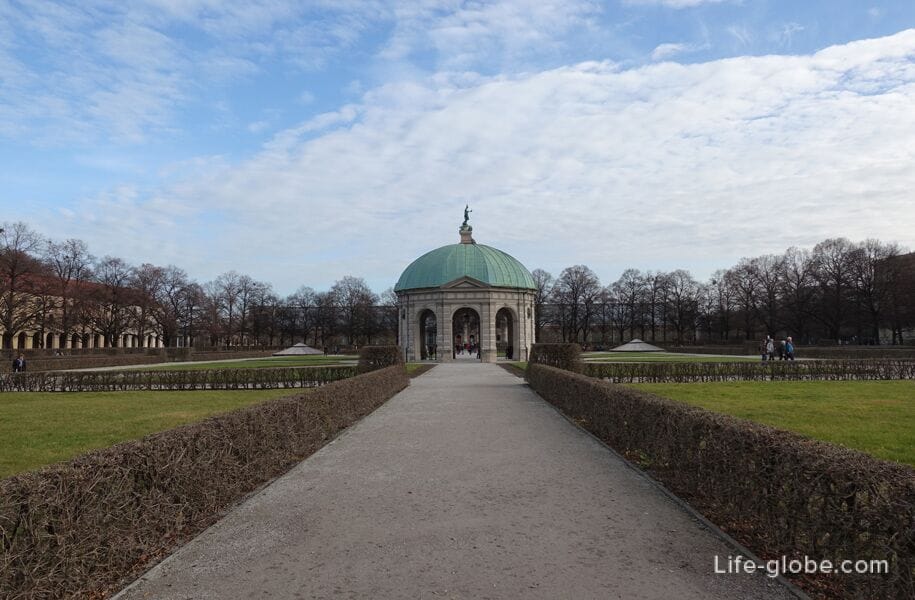
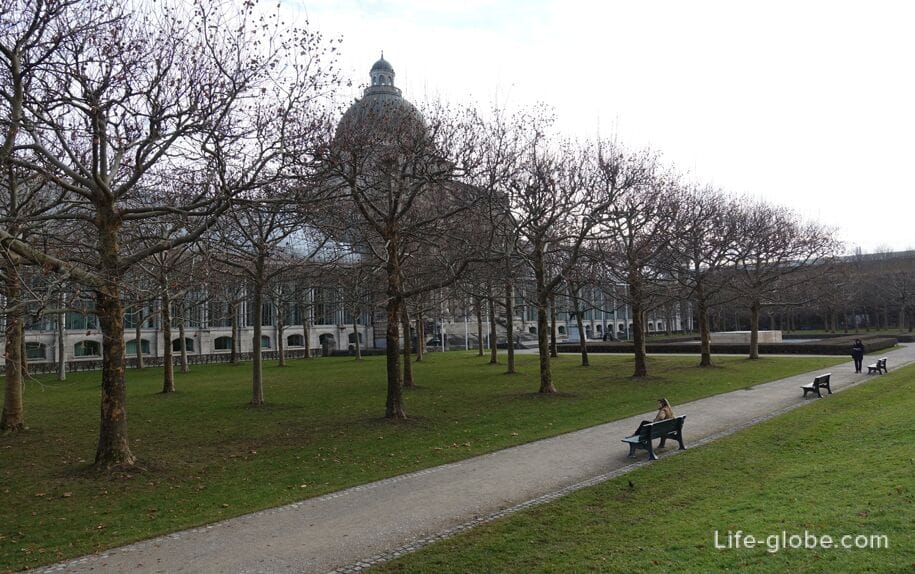
Financial garden (garden of poets)
Financial garden (Finanzgarten / Finanzdaten) is a small public Park located on the North side of the Hofgarten Park, in the North-Western outskirts of district the Altstadt-Lehel.
Currently, the Park is better known as the garden of the poets (Dichtergarten) and a place revered by poets and writers associated with the city of Munich.
The Park has monuments: the poet Fyodor Tutchev and Heinrich Heine (Heinrich-Heine-Brunnen), designed by Tony Stadler (1957-1958). A monument to Heine is behind bars, in the preserved basement of a garden pavilion.
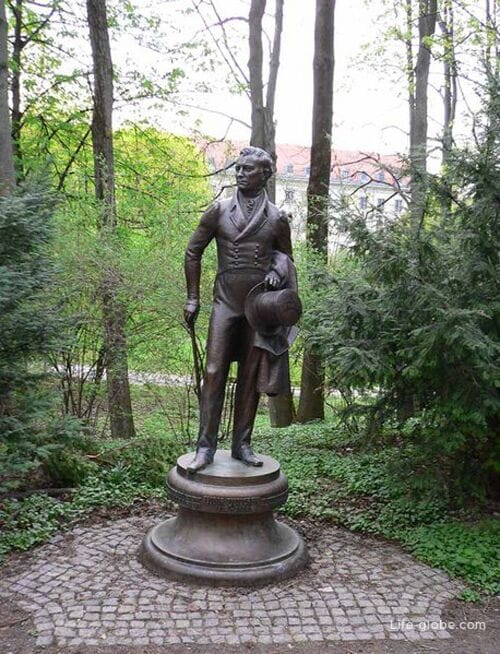
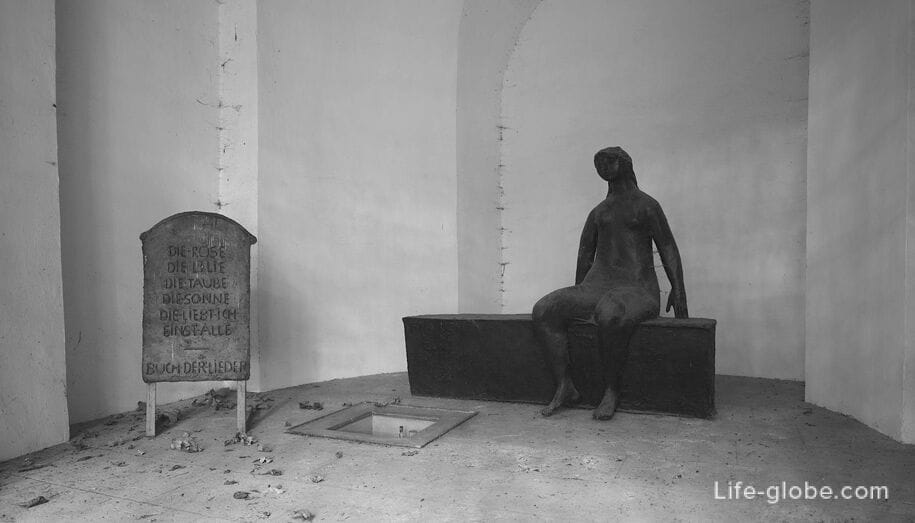
English garden
English garden (Englischer Garten) is a large public Park in Central Munich, which is one of the largest urban parks in the world.
The Park has been around for over 230 years.
Currently, the English garden is a popular place for walks, leisure and sport, both among locals and visitors alike.
In the Park there are several important attractions, including: the observation deck with rotunda, Japanese tea house, part of the Berlin wall, the Chinese tower, the wave of the "Eisbach", restaurants with beer gardens and St. read More about the English garden...
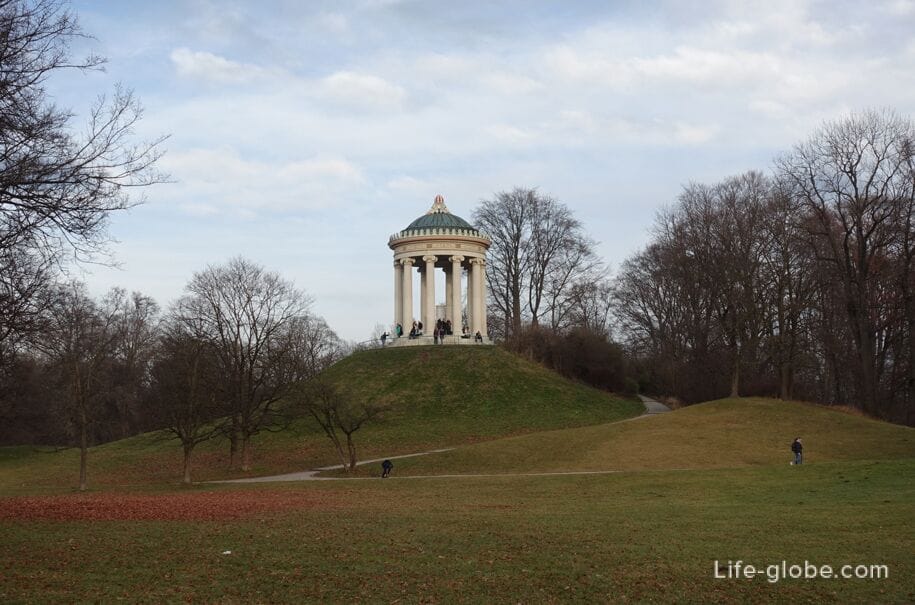
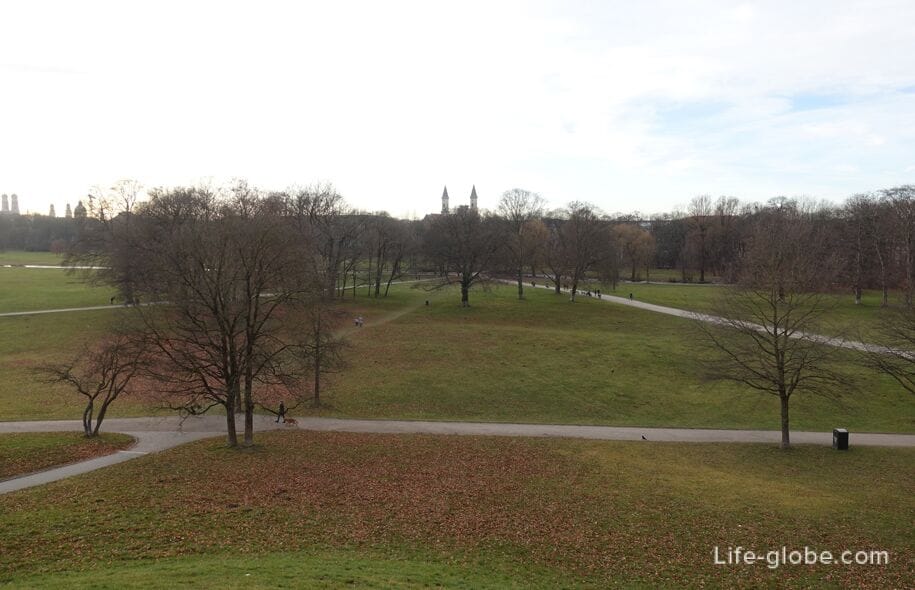
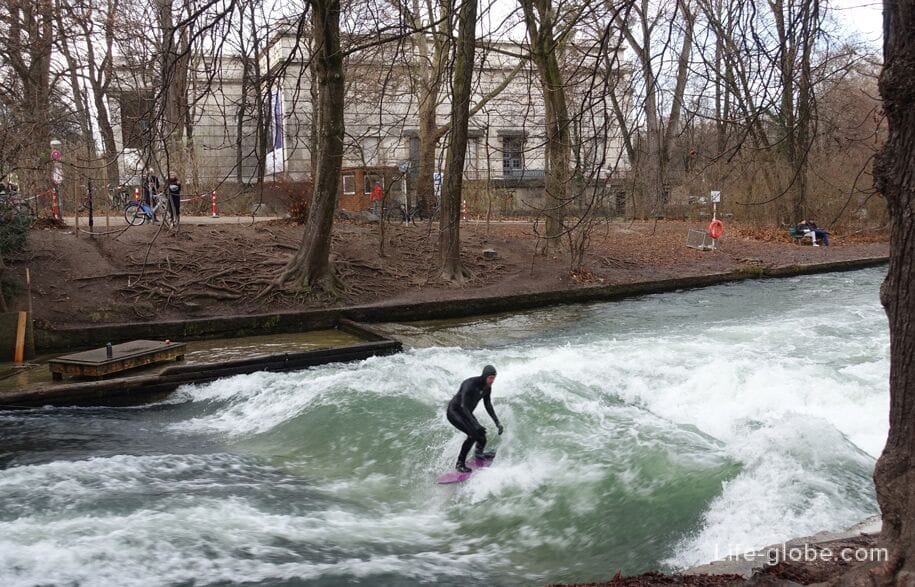
Olympic Park
Olympic Park (Olympiapark / Olympiapark) - Park complex, which was built for the summer Olympic games of 1972 in Munich.
The Park is located in the district of Milbertshofen-Am HART (Milbertshofen-Am Hart).
Today, the Olympic Park serves as a venue for sporting, cultural, social and religious events and festivals, as well as a place for sports, walks and rest.
In addition to the sport facilities directly in the complex of the Olympic Park include: a landscaped Park with a viewing of the Olympic mountain, lake Olympia, Munich Olympic walk of stars, a beer garden, restaurants, the Olympic observation tower, aquarium, residential area and shopping center. Read more about the Olympic Park...
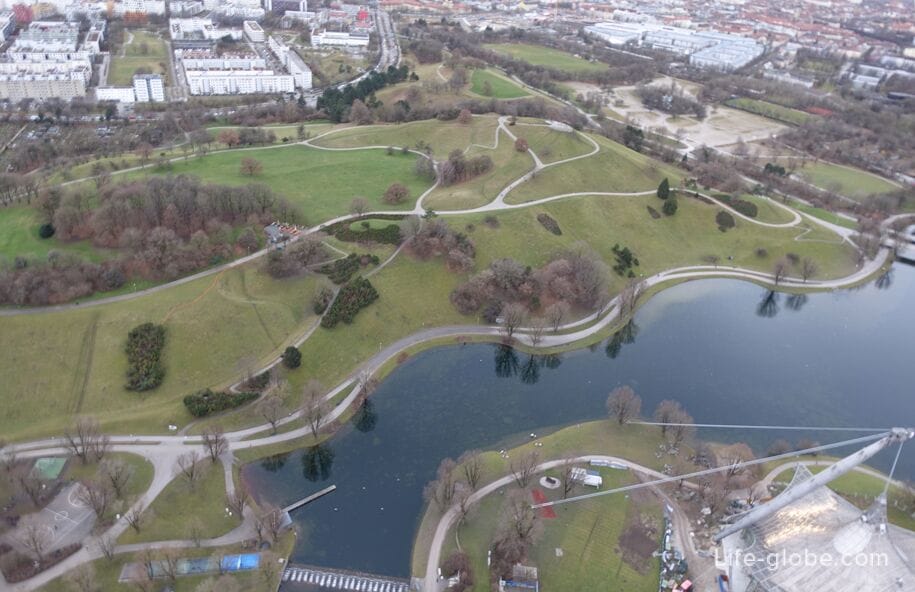


Westpark
Park West (Westpark / Westpark) - a large urban public Park created for the International horticultural exhibition (IGA) in 1983.
In the Park: two lakes, cafes and beer gardens, playgrounds and sports grounds, fountains, sculptures, places for recreation, walking and bike paths, a rose garden, which bloom in spring 20,000 roses (500 different species), the ensemble "East Asia" with gardens and buildings and the stage (Seebühne), which hosts summer film screenings under the open sky, give to live music concerts and theatrical performances.
In the Park areas of the grill (barbecue).
In the snowy winter days in the Park sledding.
All this makes Munich one of the most visited urban parks in Munich.
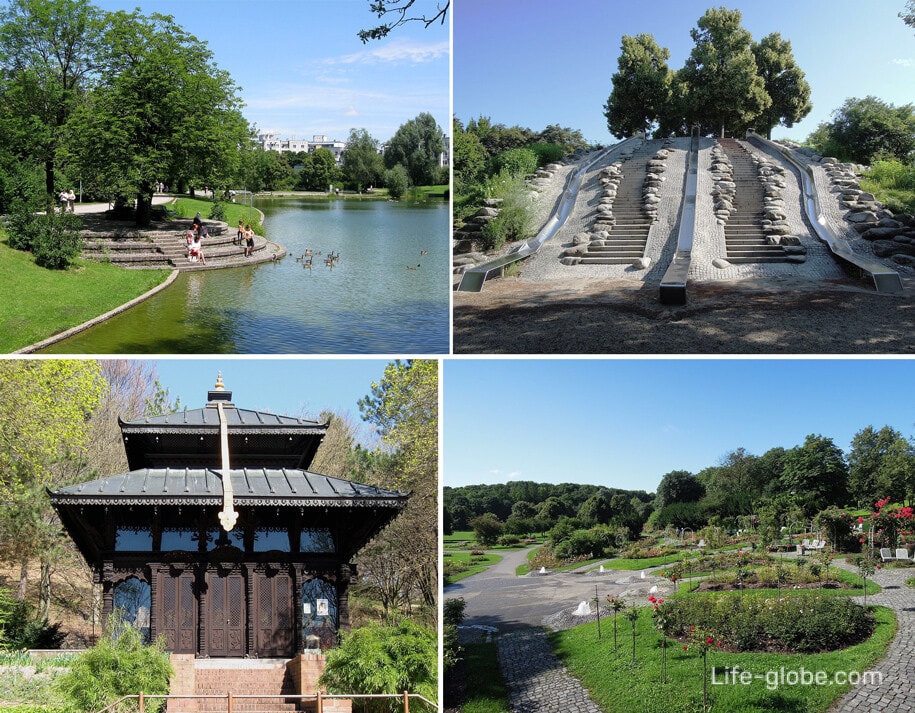
Old Botanical garden
Old Botanical garden (Alter Botanischer Garten) is located near the square Lenbach (Lenbachplatz) in Maxvorstadt and currently is a public city Park.
The Botanical garden was created between 1804 and 1812 years, according to the plans of a landscape architect Friedrich Ludwig von Scala.
In 1914 near the Nymphenburg Palace, on the former outskirts of Munich, have established a new Botanical garden. In 1937, by that time the old Botanical garden was turned into a public Park.
In the Park: Neptune fountain (Neptunbrunnen), established in 1937; the art pavilion (Kunstpavillon), created as an exhibition space in 1936; memorial the world's first transmission line over large distances Miesbach to Munich in 1882; cafes; places for recreation and walks.
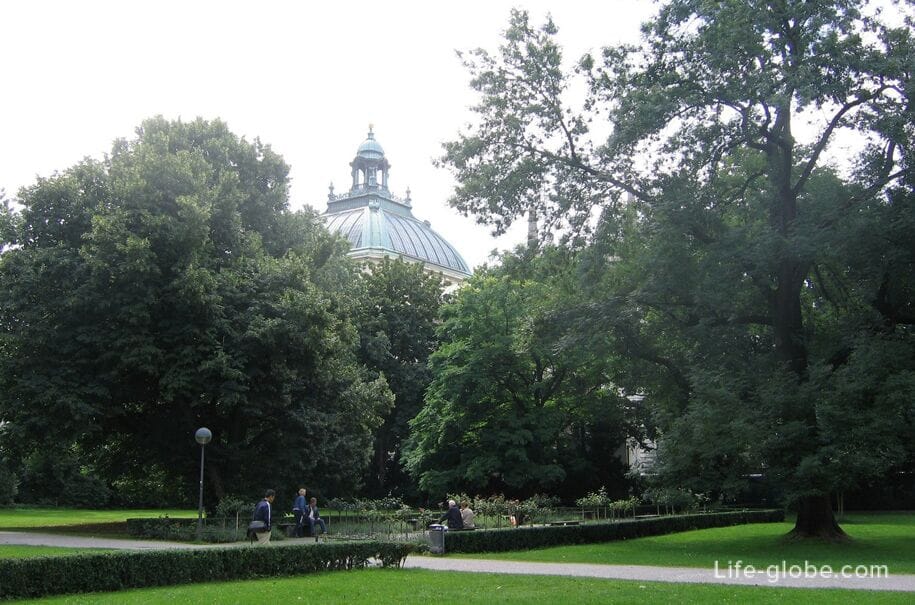
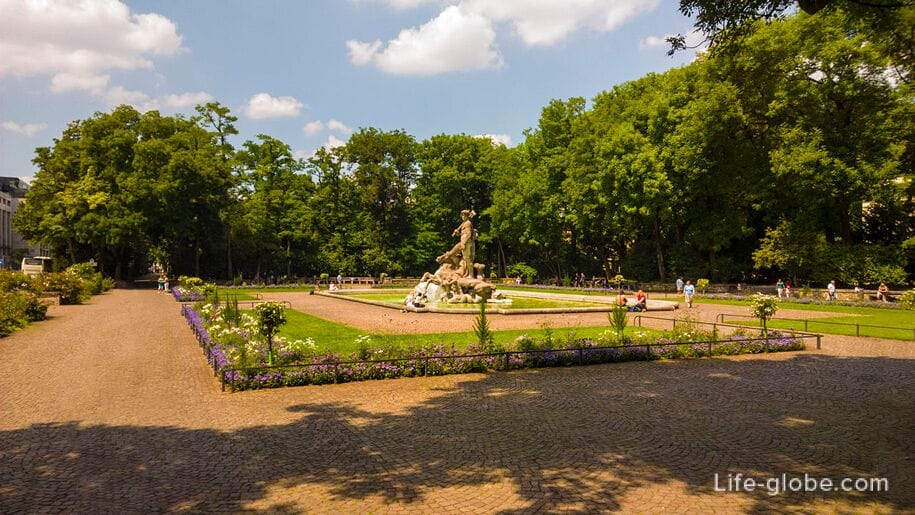
The Park of Nymphenburg Palace
Nymphenburg Palace (Schloss Nymphenburg / Nymphenburg Schloss) - the Palace complex, which is one of the majestic Royal palaces in Europe and a popular attraction of Munich.
Near the Palace lies the Palace gardens of Nymphenburg (Nymphenburg Schlosspark), who together with the Palace form a single whole.
Today, the Park of Nymphenburg Palace public, is almost 300 hectares and has aCentral channel that divides the Park in half (Northern and southern) and which is the Grand cascade - a waterfall in the Baroque style; the fountains, alleys and walkways; rental restaurant; statues and sculptures; two lakes (Badenburg and Kleiner) and monomer Apollo-Tempel (Apollo-Tempel) - the temple is a rotunda, built according to the plans of Leo von Klenze in the years 1862-1865.
In the Park of the Palace are the pavilions (small palaces), which are available to visitors for a fee. Read more about Nymphenburg Palace and Park...

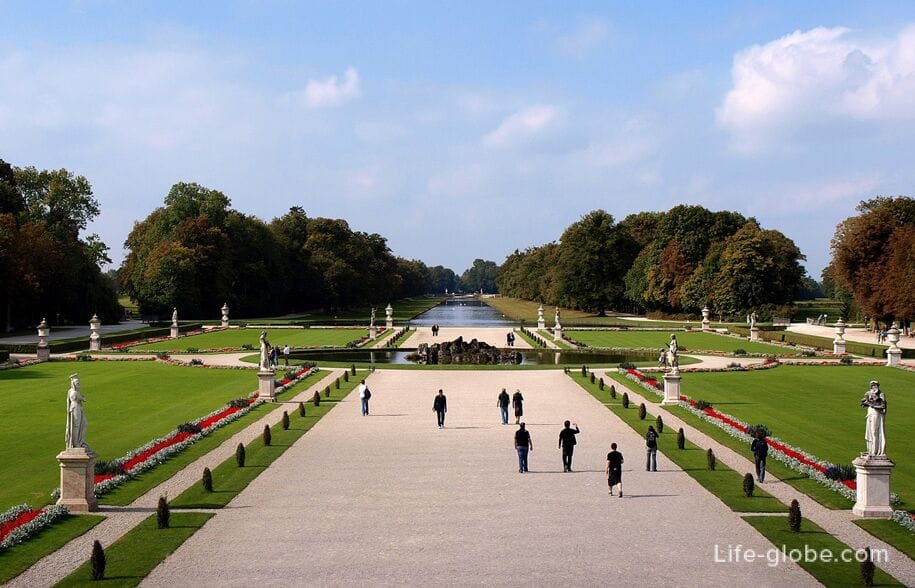
Botanical garden Munich-Nymphenburg
Botanical garden Munich-Nymphenburg (Botanischer Garten München-Nymphenburg) is a Botanical garden and arboretum, which was established in 1914.
Today in the garden grow more than 19 000 species and subspecies of plants and it serves to preserve rare plants and European bee species.
The main areas of the garden include: Alpine garden, arboretum, collection of wetland and Prairie plants, rhododendrons, rose garden, the systematic garden, water the plants in the aquariums and an extensive greenhouse complex.
The garden is located in the North-East from the city center of Munich, but are not part of the Palace complex. The Botanical garden is partly separated from the Park of Nymphenburg wall and the street.
Garden address: Menzinger Str. 65. The website of the Botanical garden: botmuc.
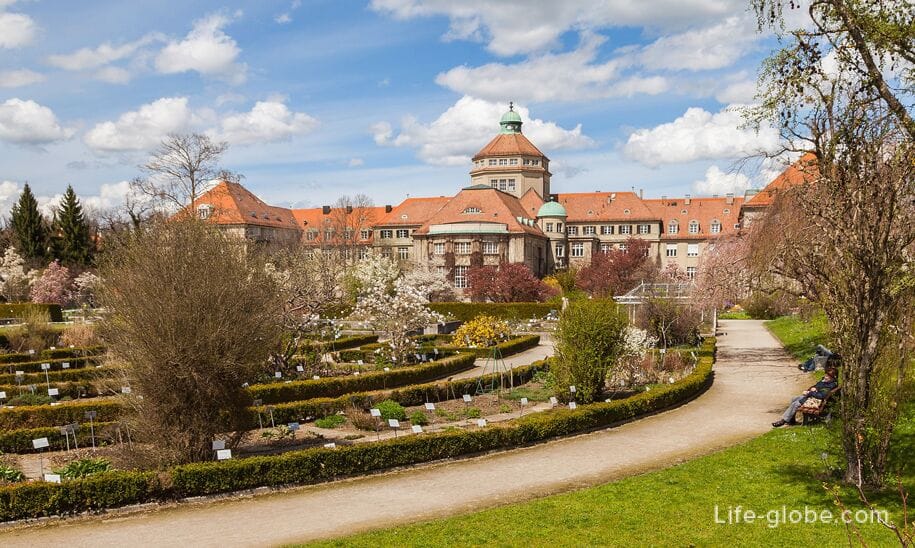
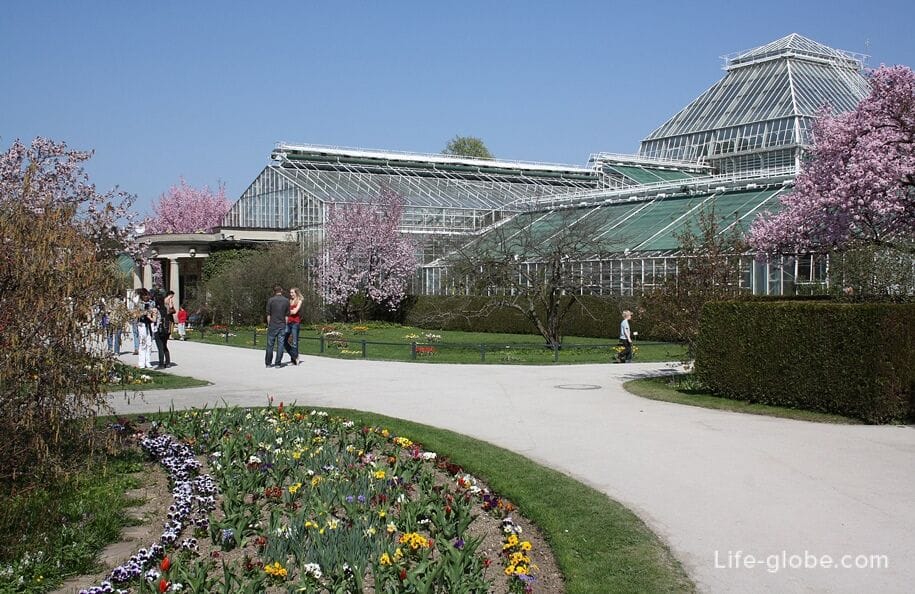
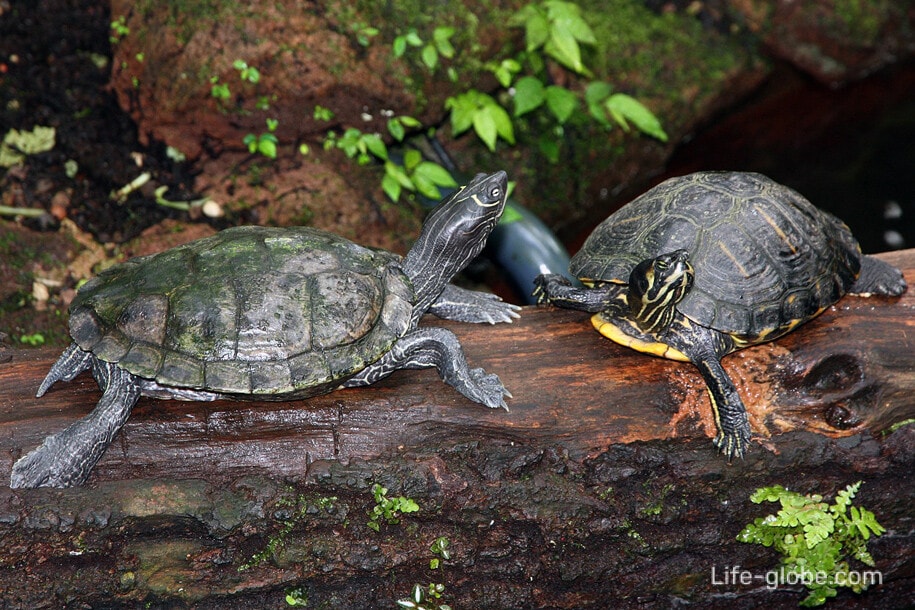
The Park area of the river ISAR
The river ISAR (Isar) flows through the city of Munich, in the direction from South to North.
On warm summer days, the coast of the ISAR in Munich is a popular spot for picnics and sunbathing. In fact, ISAR can swim, there is a place for surfing. On the coast of the allocated BBQ areas. Read more about recreation on the river ISAR in Munich: swimming, barbeque, surfing, walking and...
Along the river there are several parks and green areas:
- Park Maximiliansanlagen (Maximiliansanlagen), located on the East side of the river, occupying almost 30 hectares and is one of the favorite places in the city for sports, walks and rest.
In the Park: the abundance of greenery, paths and trails for walking, places for rest and terraces.
In the summer on the banks of the river among locals and guests of the city. And in the snowy winter days a small hilly parts of the Park are used for sledding and boats. Read more about the Park Maximiliansanlagen...
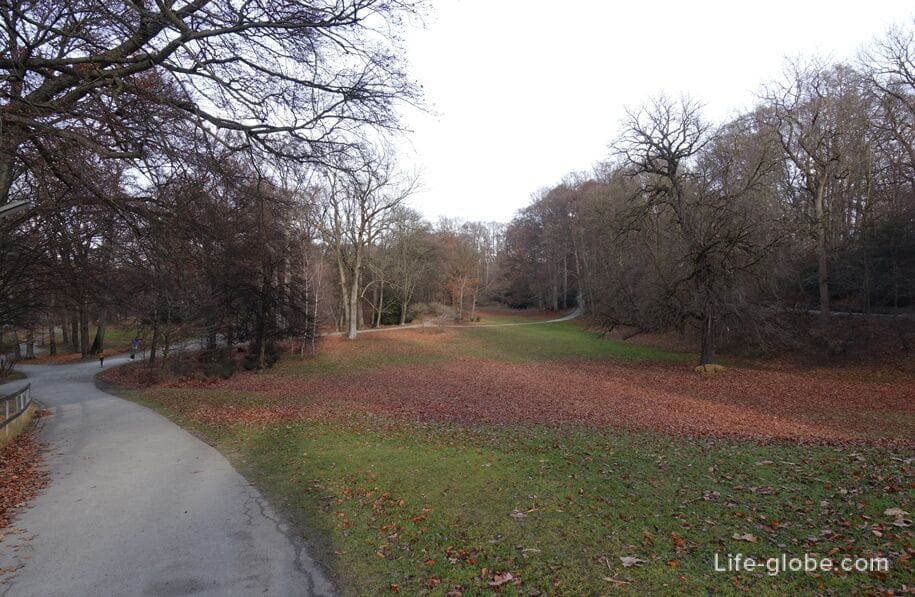
- Park area "Spring plants" (Frühlingsanlagen), with an area of about 16.3 ha., including a large coastal strip of the river.
In the Park: places for walking and recreation, a fountain, playgrounds, cafes, sculptures and shapes, chapel (Ölbergkapelle);
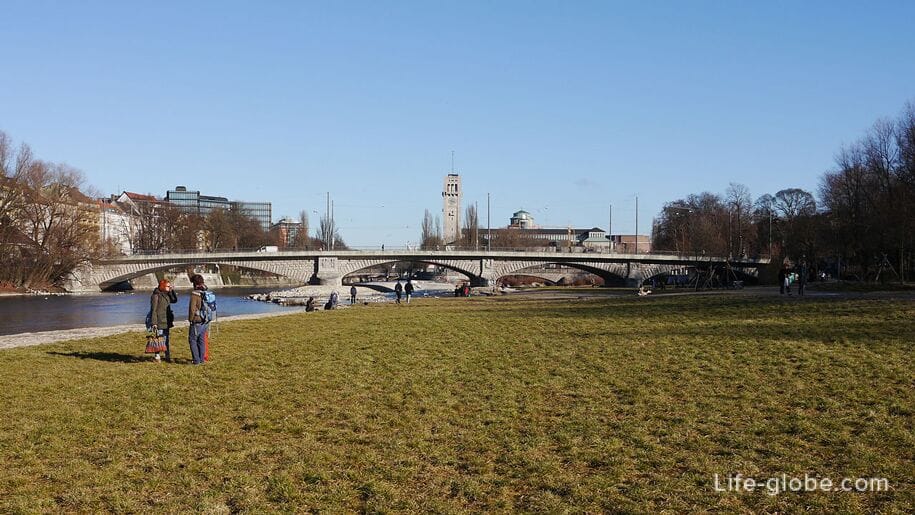
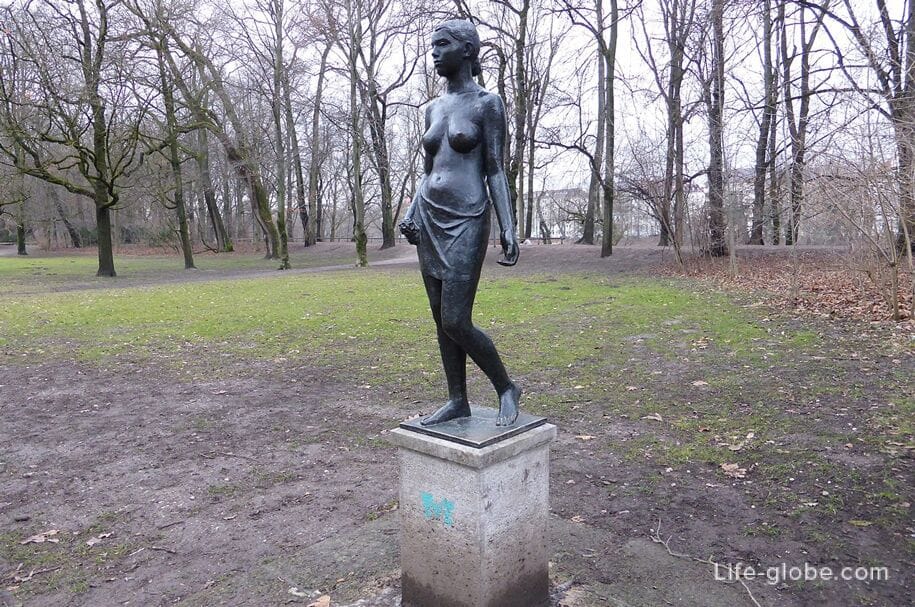
- area Flaucher (Flaucher) with green spaces, places for swimming, BBQ areas, playgrounds, cafes, a beer garden and the nearby Isartor meadows.
The Flaucher area located in the southern part of Munich is a popular place for summer holidays;
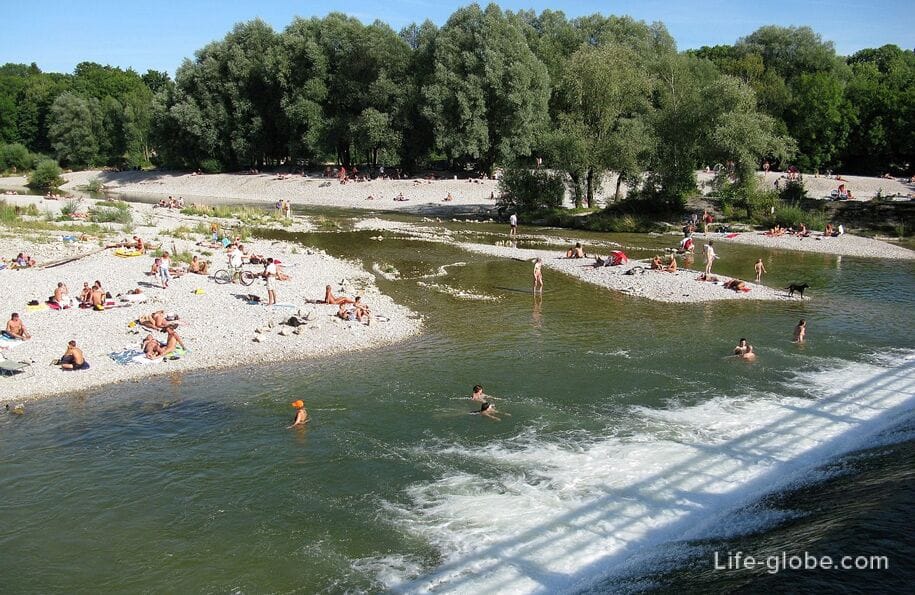
- in the North-East of Munich in the green areas of the ISAR are the official places for swimming. Several BBQ areas are highlighted on the island part with the dam Overfiring (Stauwehr Oberföhring).
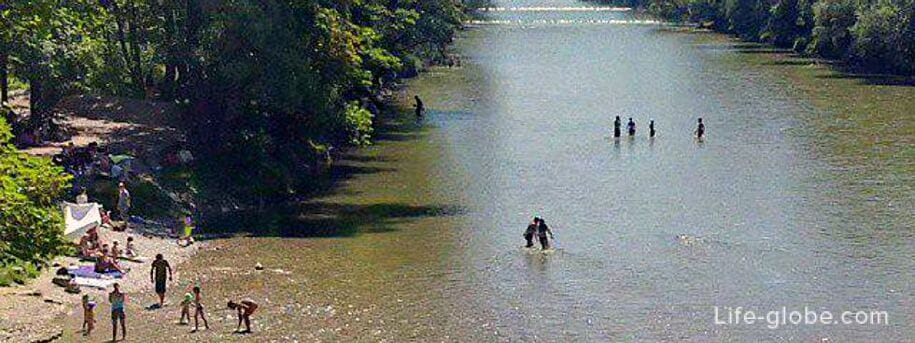
Zoo District
Zoo District (Münchner Tierpark Hellabrunn) is geotopia where the animals are housed in spacious enclosures in accordance with the habitats: from the Arctic circle to Africa, from Europe to Asia and from America to Australia.
The zoo was founded in 1911. Is one of the most known scientifically managed zoos in Europe. Over 750 species of animals live in a natural place in the landscape protection zone of the meadows of the ISAR.
The zoo is located in the southern part of Munich, on the East Bank of the ISAR.
Address of the zoo: Techextreme, 30 (Tierparkstraße). The website of the zoo: hellabrunn.
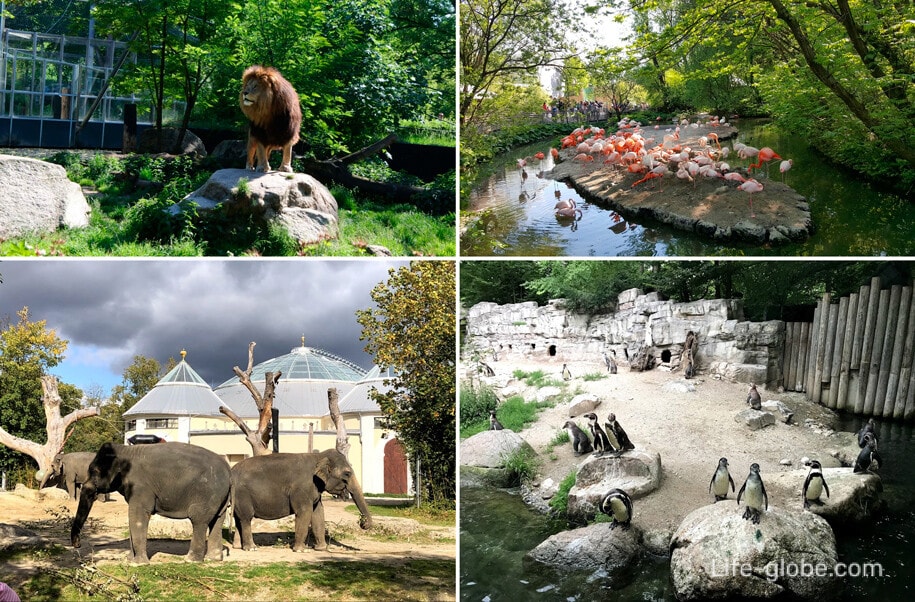
The Luitpold Park
Luitpoldpark (Luitpoldpark / Luitpoldpark) has an area of 33 hectares and is located in the North-West of the district Schwabing-West (Schwabing-West).
In 1911, the Bavarian Prince Regent Luitpold 90 years old. In his honor, planted with 90 lime trees, around which was later built a public Park - that was Luitpoldpark.
In the Park: places for recreation and walks, a fountain, an obelisk, playgrounds, historical neo-Baroque building of the "house of Bamberg" (Bamberger Haus) which now is a restaurant with a summer terrace.
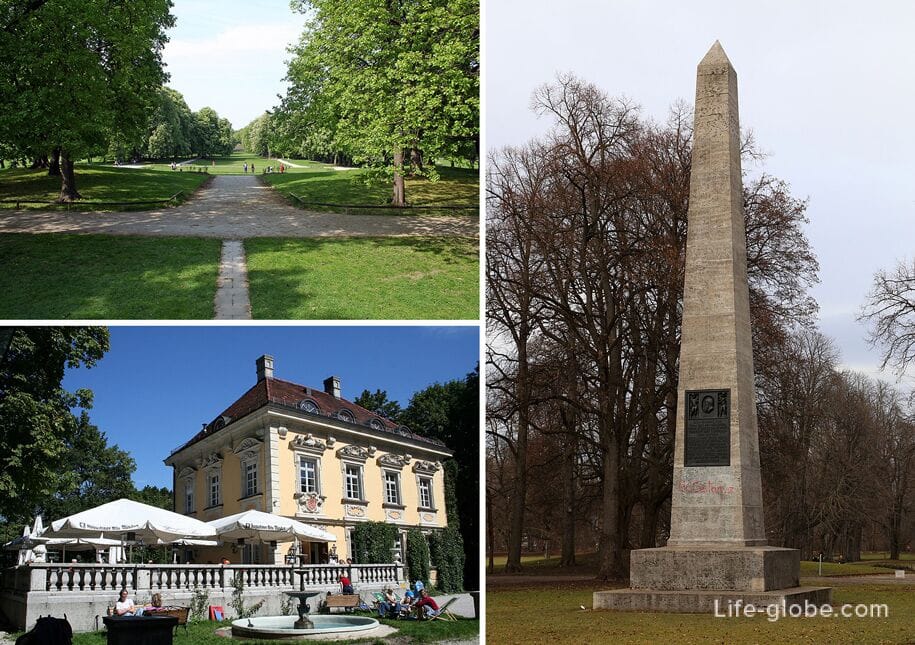
The most visited place in the Park Luipold is a 37-metre-high hill Luitpold (Luitpoldhügel / Luitpoldhain) have an artificial origin and is located in the northwestern part of the Park.
On the top of the hill is the place to relax and a landscaped observation deck, which offers views of the Park itself and partly in Munich and the surrounding area. Read more about viewing platforms and observation points in Munich...
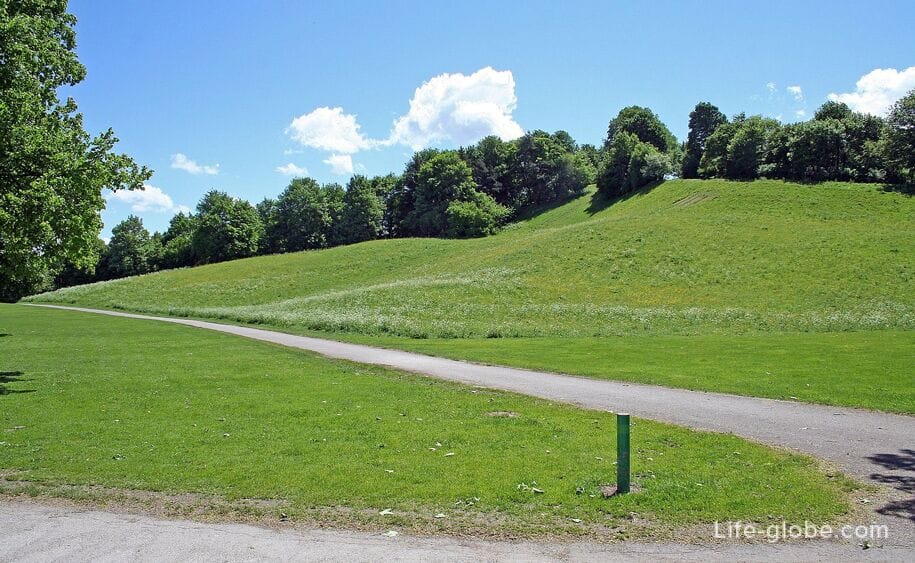
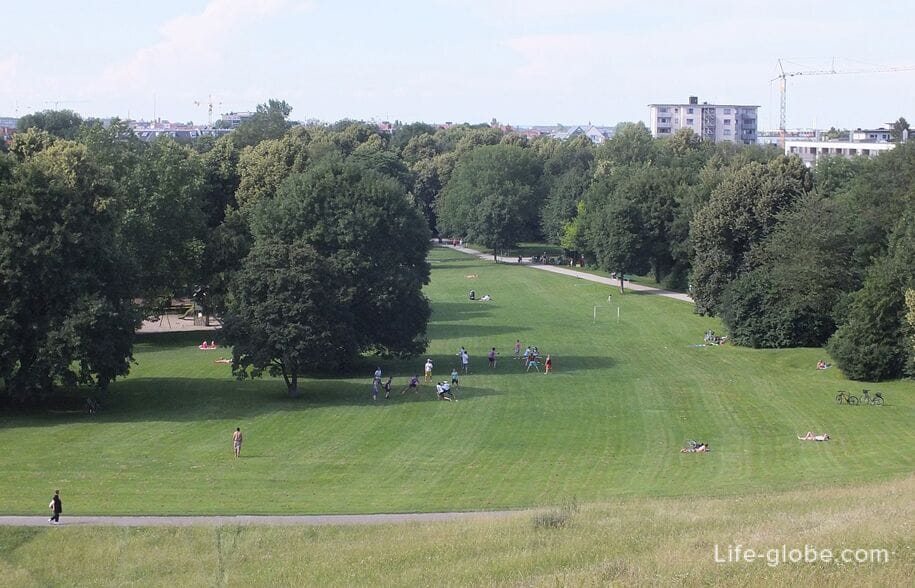
Hirschgarten
Hergarten Park (Hirschgarten), which means "deer garden", located in the Western part of Munich, close to Nymphenburg Palace.
The name "deer" Park was because previously it was outside the city and in the area hunted the nobility. In 1780 the elector Carl Theodor ordered to create hunting grounds of the territory was fenced, and was released 100 pairs of deer.
In 1958-1959 the North-Eastern part of the Park was converted to an urban area. From 1968 to 1970 the area was expanded to the South and became a public Park.
Today the Hirschgarten has 40 hectares, which are: trees, some of which are over 150 years old, Playground for children, skate Park, meadows, barbecue areas and an aviary with an area of 2 hectares with fallow deer and mouflon.
Also in the Park is supposedly the biggest beer garden in the world, designed for 8000 seats. However, it is not clear whether a beer garden in the Park is the largest in the world?! But one thing is certain: "at least in Bavaria there is the beer garden which boasts a large number of places." The website of the restaurant with beer garden: hirschgarten.
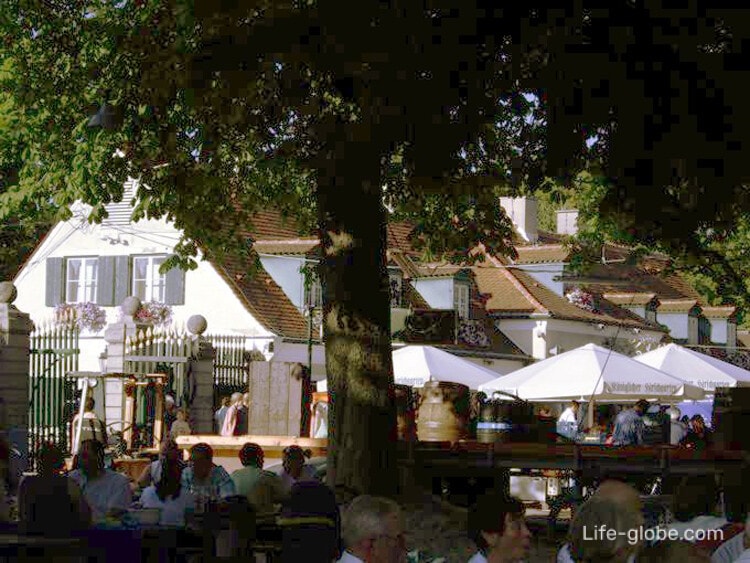
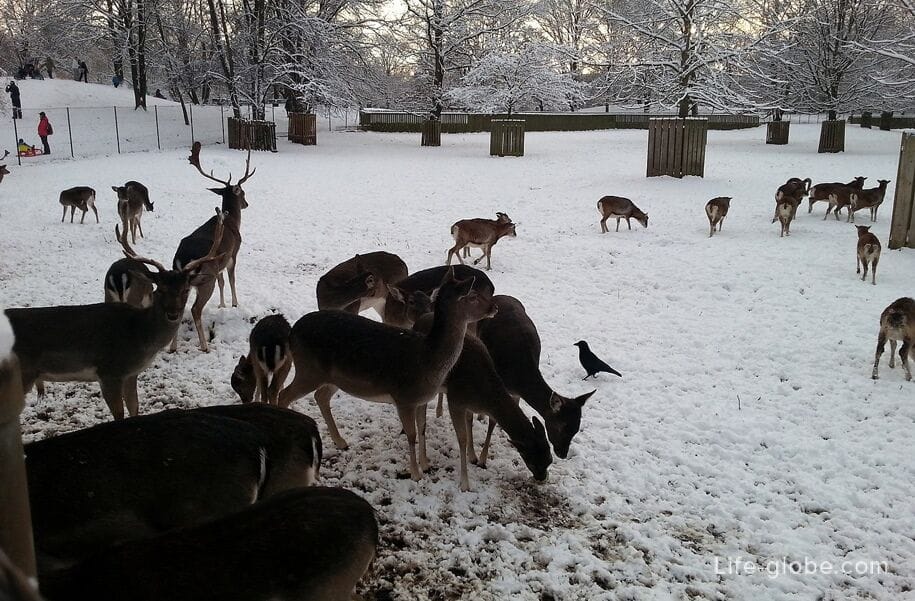
Park Bavaria and Theresienwiese
Park Bavaria Bavarian Park (Bavariapark / Bavariapark) is a quiet place, an area of about 6.8 hectares.
In Park: walking paths, green areas, sculptures and a Playground.
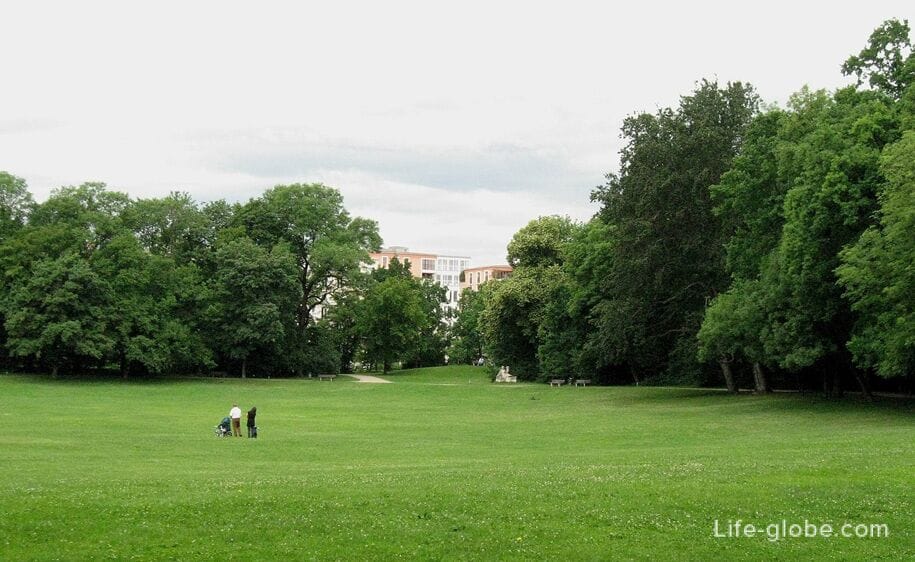

Bavarian Park is located on the West side of Theresienwiese (behind the statue of Bavaria and Hall of fame), which in turn is the largest in Munich, the venue for the celebrations and festivals, including:
one of the most famous and the world's largest folk festival (beer festival) - Oktoberfest that is held annually in the second mid of September to beginning of October;
- winter festival "Tollwood", which is held in December and includes Christmas market and cultural events up to New year. Read more about meadows Teresa and festivals...
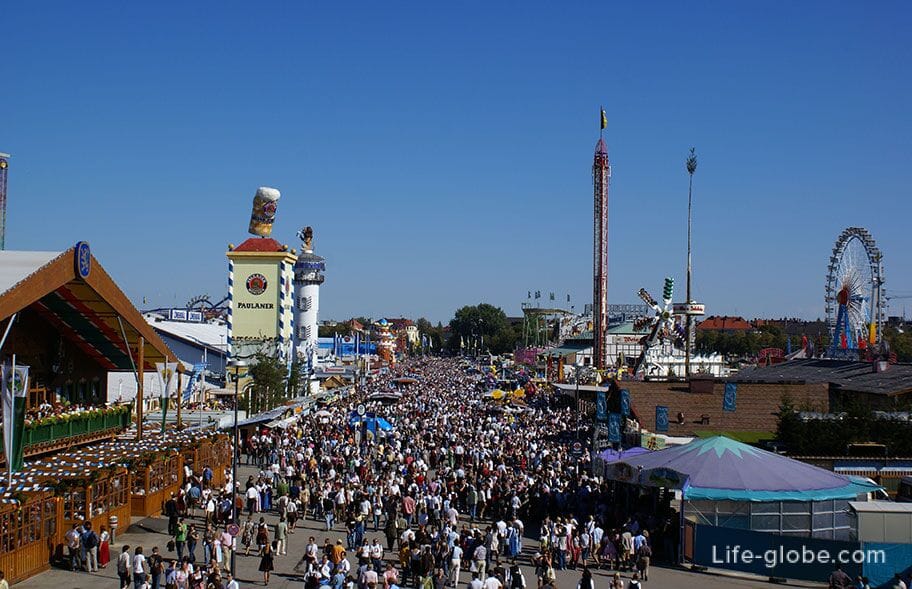
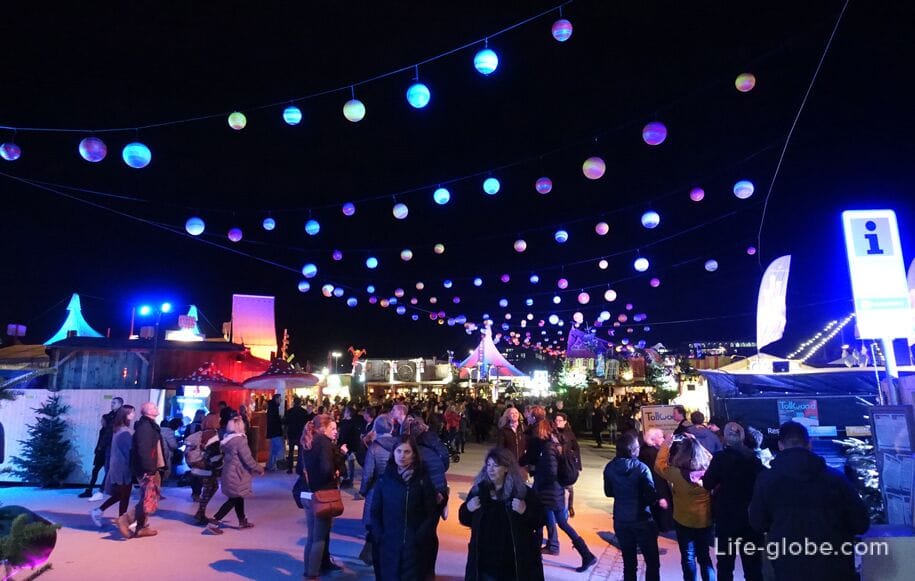
Park OST
Park OST (Ostpark) is located in the South-Eastern part of Munich.
A public Park had been planned since the 1960-ies and opened in 1973.
Ostpark, with an area of 56 hectares, emerged from the field.
In the Park: the winding paths, manicured lawns, trees, and hills, and children's basketball courts, pond construction, stage, beer garden and area for grilling (BBQ in the North-Western part of the Park).
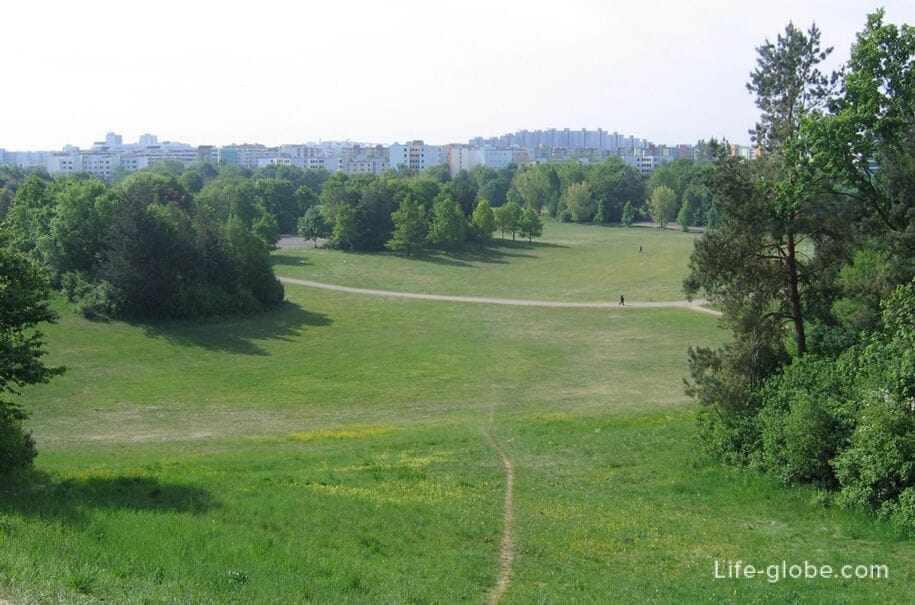
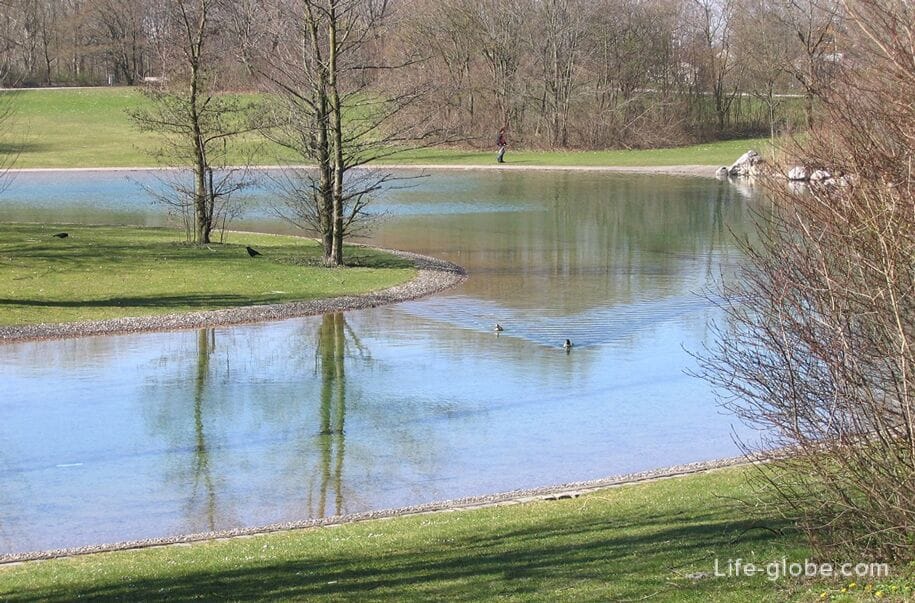
Park Rimer
Park Reamer (Riemer Park) is a landscaped Park with an area of 210 hectares, located near the Eastern edge of Munich's Trudering district-Rome (Trudering-Riem).
The Park was created between the years 1997-2005 in the territory of former airport and was awarded the German prize for landscape architecture.
In the Park: the artificial lake with places for swimming, beach volleyball, walking paths, places for rest, playgrounds, skate Park.
From the materials remaining after the demolition of the former airport, in the Park were created artificial hills with a height of up to 20 meters (Rodelhügel), which are now used as a place for walks and sightseeing points, and in the snowy days of winter for sledging.
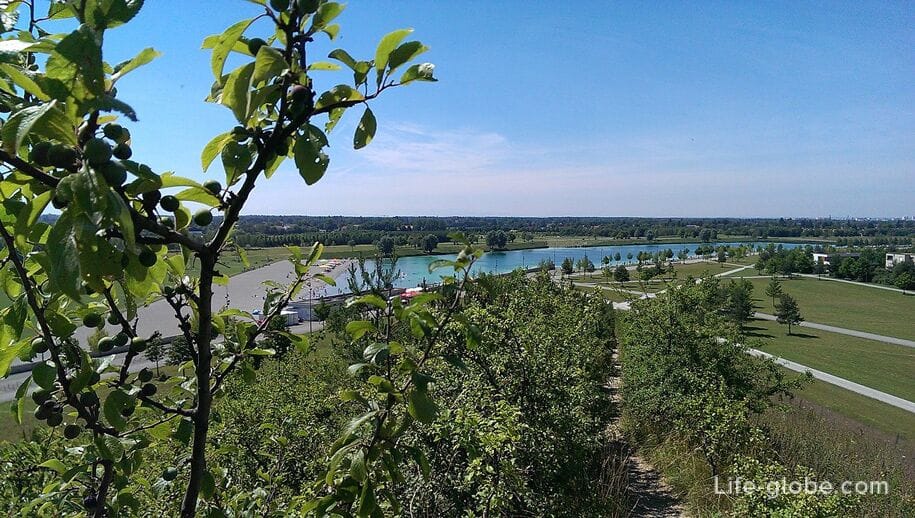
Other small parks and gardens in Munich:
- Park Checkinstalled (Heckenstallerpark / Checkinstallrc), which was built over the tunnel (Heckenstallertunnel).
The Park has a length of about 570 meters and a width of from 40 to 70 meters. It stretches between the streets Chelverton (Höglwörther) and Passauerstrasse (Passauerstrasse).
In the Central area of the Park is a large Playground with a basketball ring, table tennis tables and a climbing area. The Park also has places to stay: the lawns and benches;
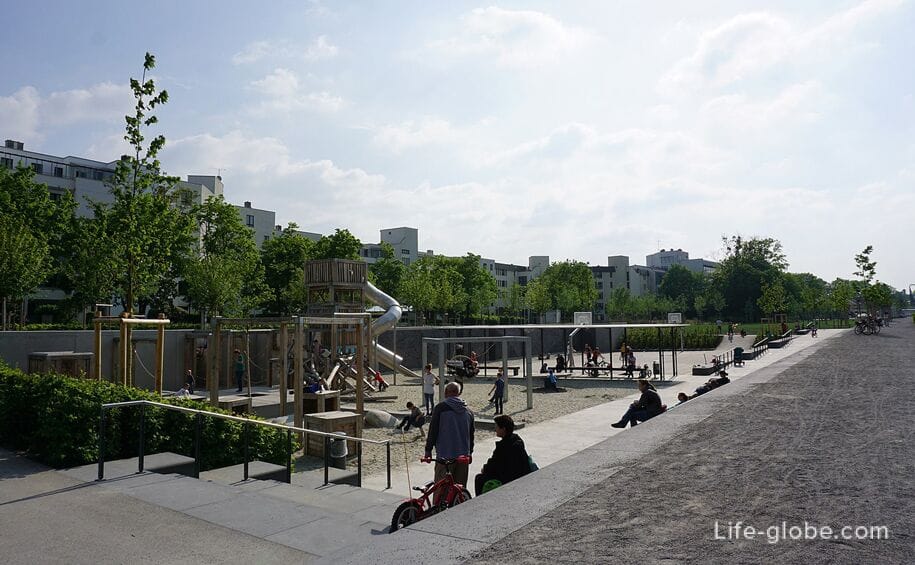
- Park Petual (Petuelpark /Mutualpark) - green area, located partly over the tunnel Petuel (Petueltunntl).
The Park serves as a recreational area on site length of 900 meters and a width of 60 meters. In the Park: the waterfront, several playgrounds, a soccer field, a café and several works of art;
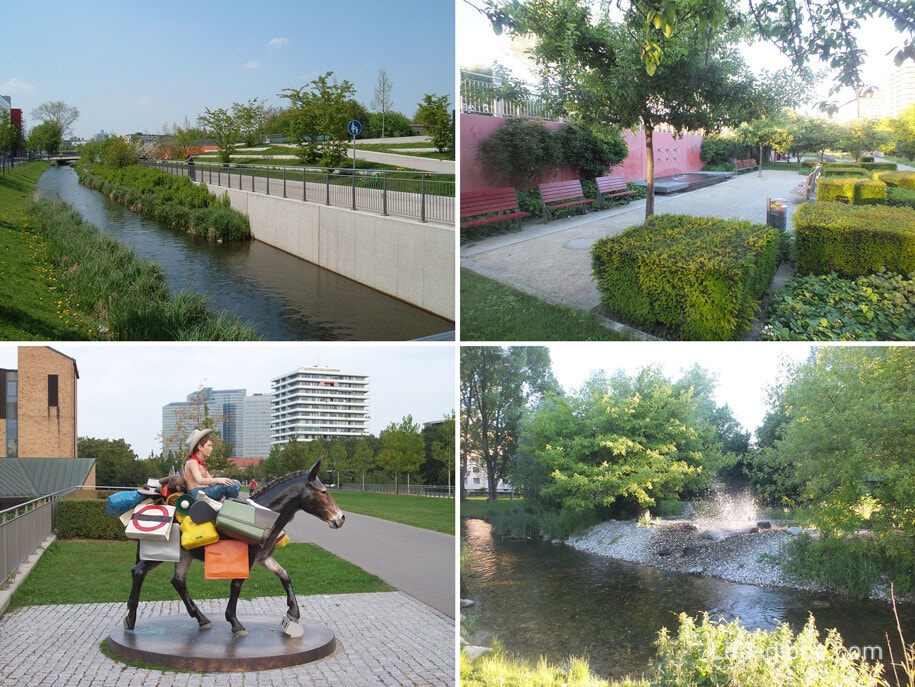
- Park the taxis (Taxispark / Taxicar) is a small oasis of recreation and entertainment, created on the former site of the closed holiday Park for people who have received war injuries.
The Park has: children's Playground, places to stay, the fountain, the lower garden stretches into several levels.
Park taxis is located in the Western part of Munich in the district Neuhausen-Nymphenburg (Neuhausen-Nymphenburg), close to Nymphenburg Palace.
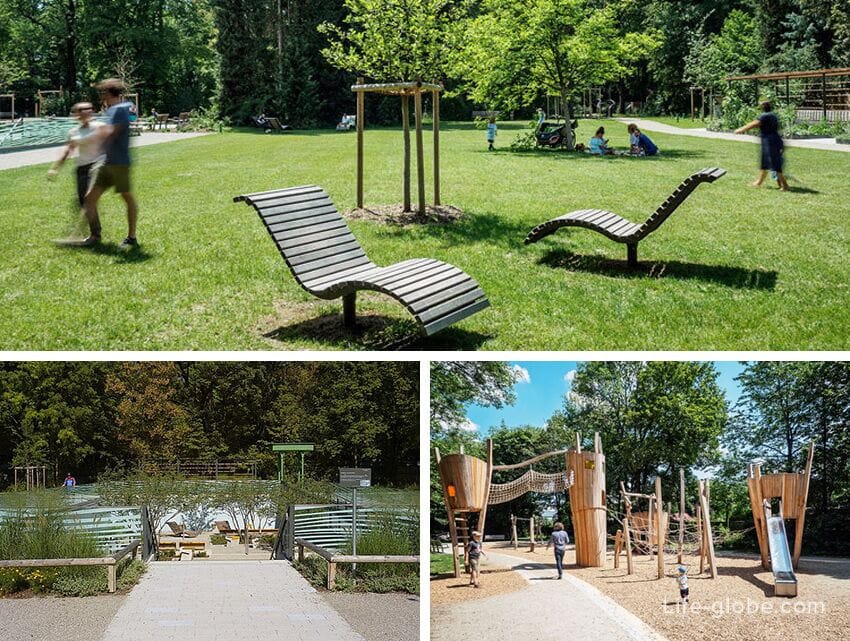
- Park the Crown (Kronepark /Crokepark), located on the East side of the ISAR river, in the district of AU-Haidhausen.
In the Park there are a fountain Stinkwater (Steinquader Brunnen) and a children's Playground.
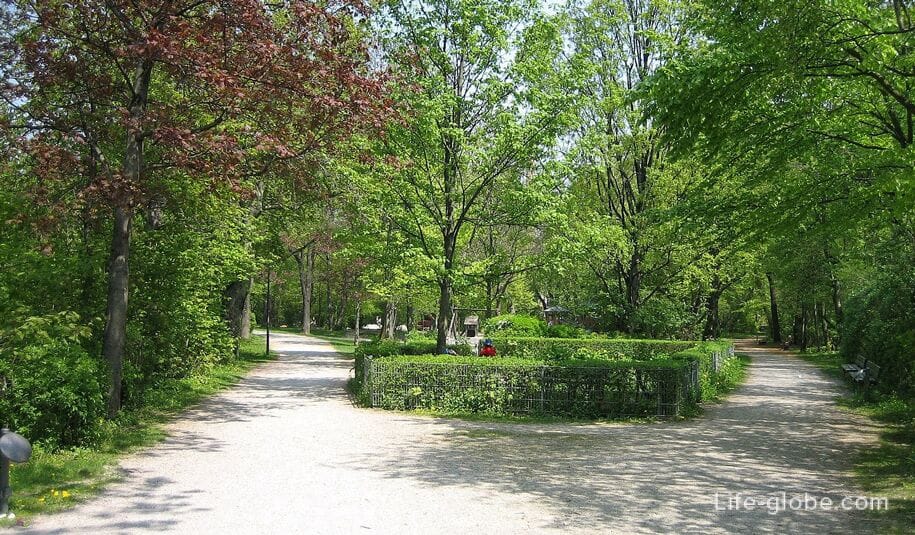
Across the road from the Park is a terrace of Nockherberg (Nockherberg), whose name often used to refer to part of the Park. The strong beer festival is held annually during lent on the terrace and in the main hall of the restaurant Paulaner (Paulaner am Nockherberg). The holiday begins around the Day of St. Joseph (19 March) and lasts for 17 days;
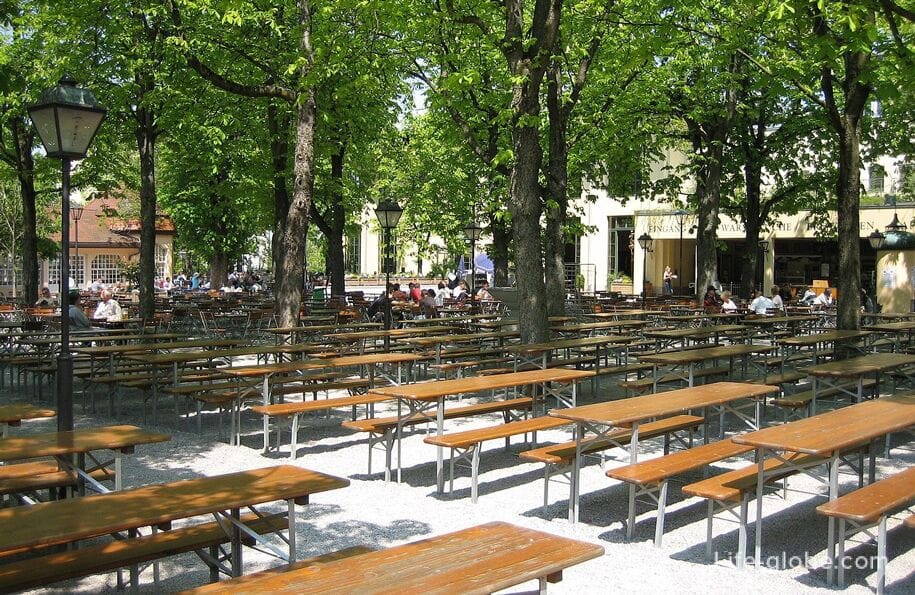
- hill fröttmaning underground station (Fröttmaninger Berg / prefmanager the Berg), have an artificial origin and a height of 75 meters.
Within the hill there are places for walking and recreation, children's Playground, wind turbine, and its top views of the football Allianz arena (Allianz Arena), Munich's skyline and the surrounding area.
Fröttmaning underground station is located at the Northern edge of Munich in the district Schwabing-Freimann (Schwabing-Freimann);
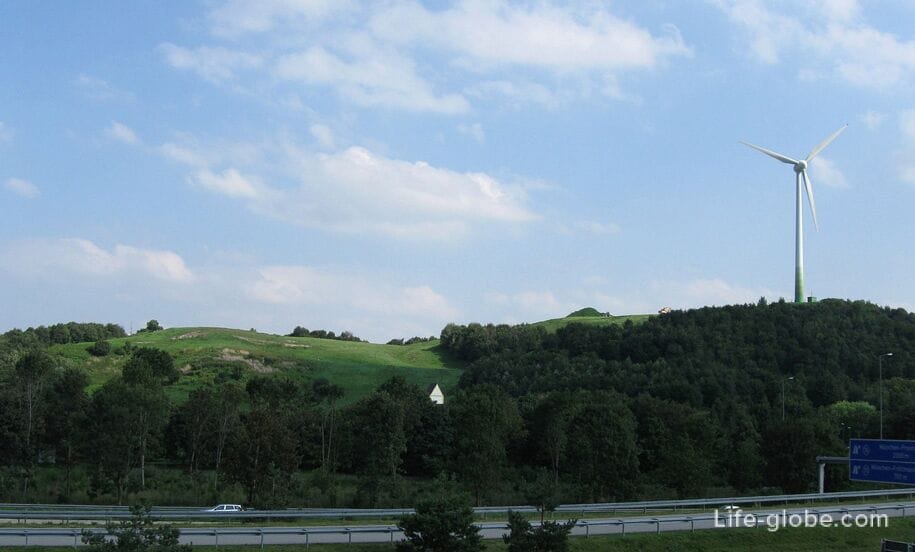
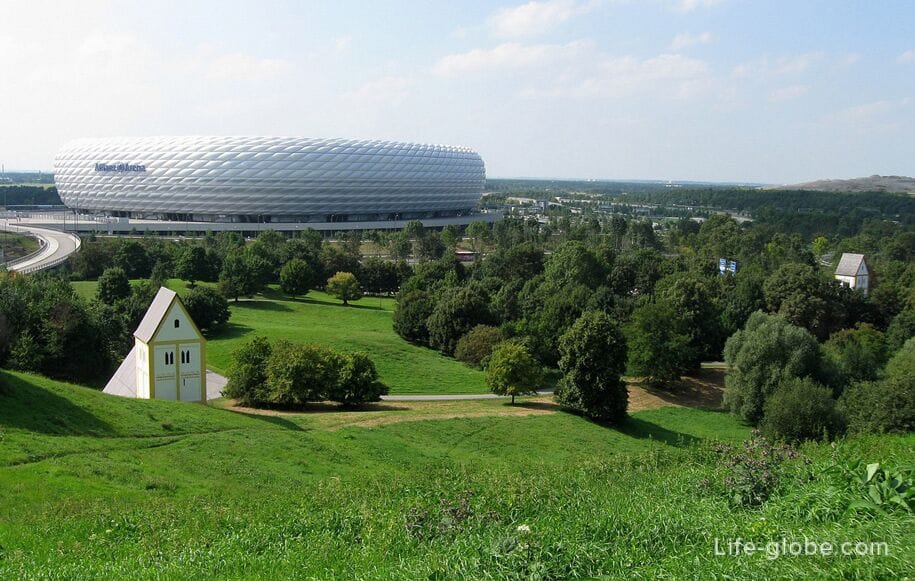
- Park area with Seating and BBQ at the Munich lakes: Feldmochinger (Feldmochinger See), Fantasy (Fasaneriesee / Fasanerie), Lerchenauer (Lerchenauer See), languager (Langwieder See), two zones between the lakes Luss and Birken (Lußsee / Birkensee);
- the old southern cemetery (Alter Südfriedhof) - the oldest surviving Central cemetery in Munich, which was founded outside the city during the plague in 1563.
Today the cemetery is not being used for its intended purpose (for burials), and is a kind of Park.
Within the cemetery are: old graves, including some prominent Bayern, cemetery St. Stephen's Church (Kirche St. Stephan), children's Playground, the fountain and the Lapidarium (Lapidarium, the former sanctuary);
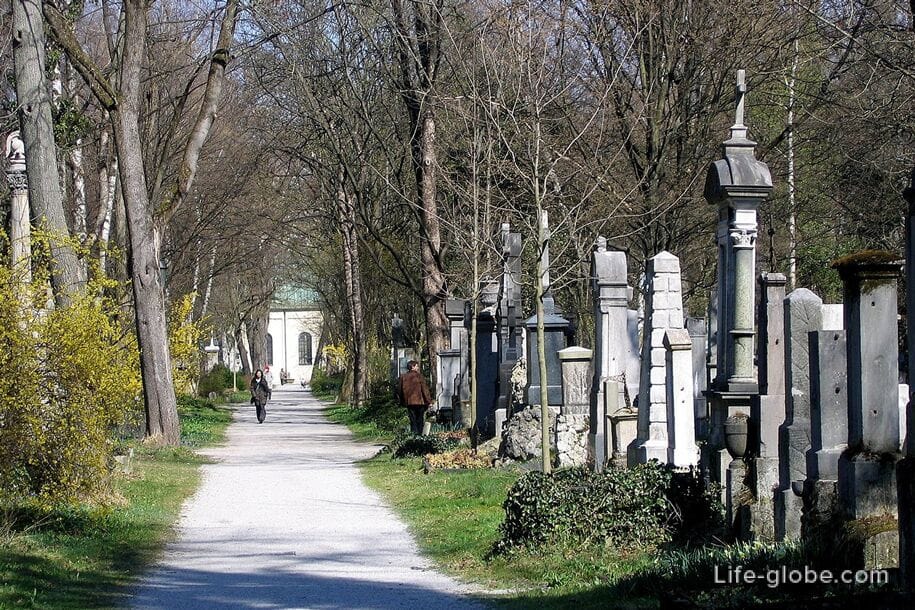
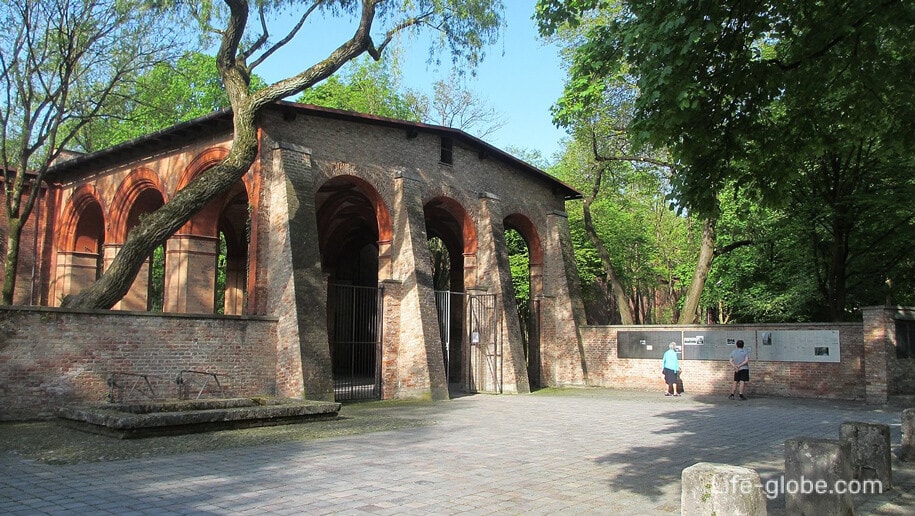
- old North cemetery (Nordfriedhof, Alte), built in 1866 according to the plans of the architect and city Councilman Arnold, Zenetti. Was used for burials between 1869 and 1944-1945.
In the postwar years, it was decided no longer to "open" the old North cemetery. Many graves have been cleaned. Of the total capacity 7272 graves, only 700 survived to the present time.
Today the cemetery is used as a green area (a small Park) and as part of piety towards people buried here long ago.
In the Park benches, and instead of the sanctuary, now there is a Playground, separated from the rest of the cemetery. Near the Playground a Playground for ball games and places to play chess (the Western edge of the cemetery);
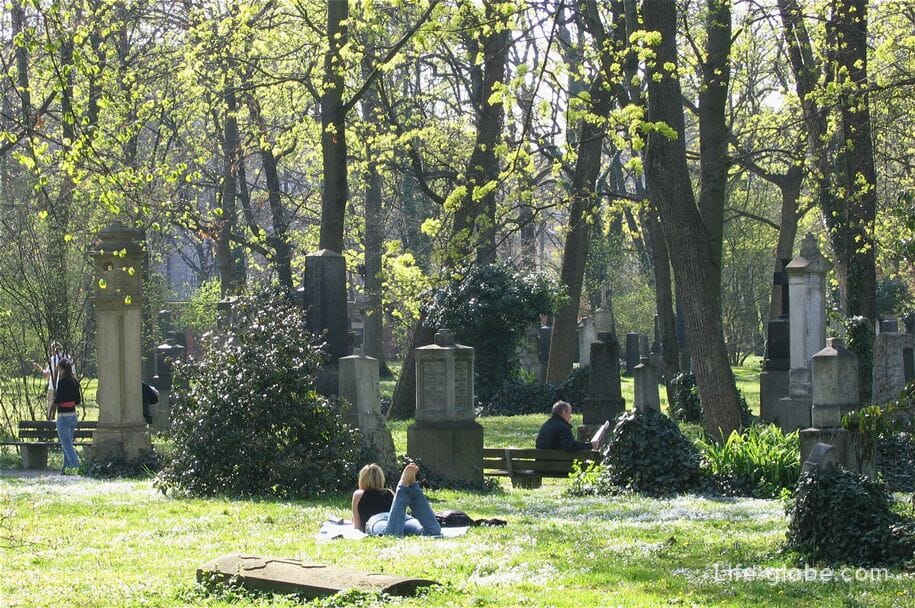
- the forest beyond the southern outskirts of Munich - the Perlacher (Perlacher Forst), which is an artificially created hill / mountain "the Perlacher a Muggle" (Perlacher Mugl) with panoramic views and in good weather you can even consider Alpine peaks.
In the place where today is located the panoramic mountain, "the Perlacher Meagle," during the Second world war was a large bunker. The place was littered in 1970, debris, dug from the ditch McGraw (McGraw-Graben), then the mountain of debris covered with earth and created the landscape - thus was created the popular "forest mountain".
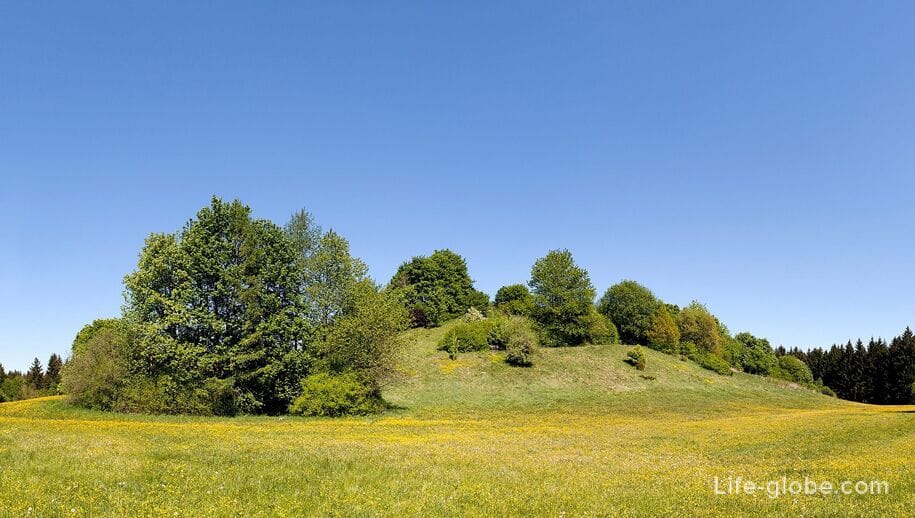
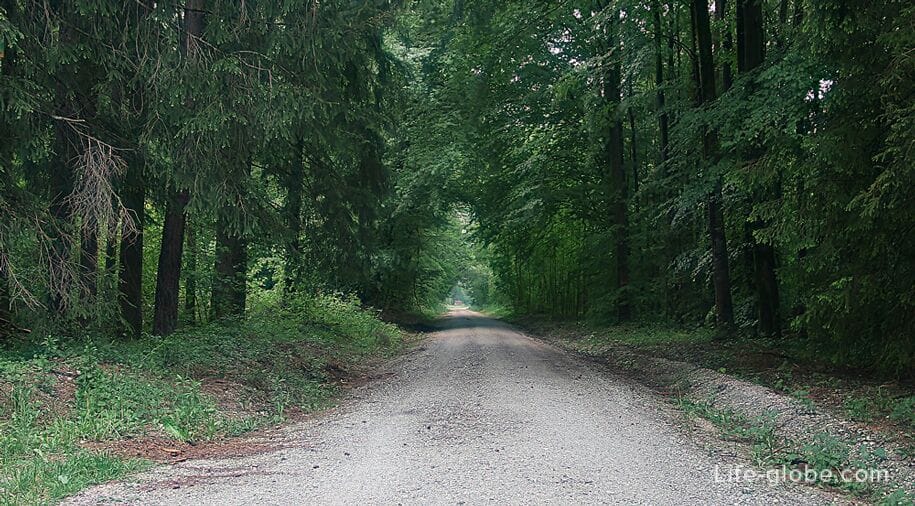
All accommodation in Munich, including close proximity to parks, the river ISAR and the city centre, you can view and book here








